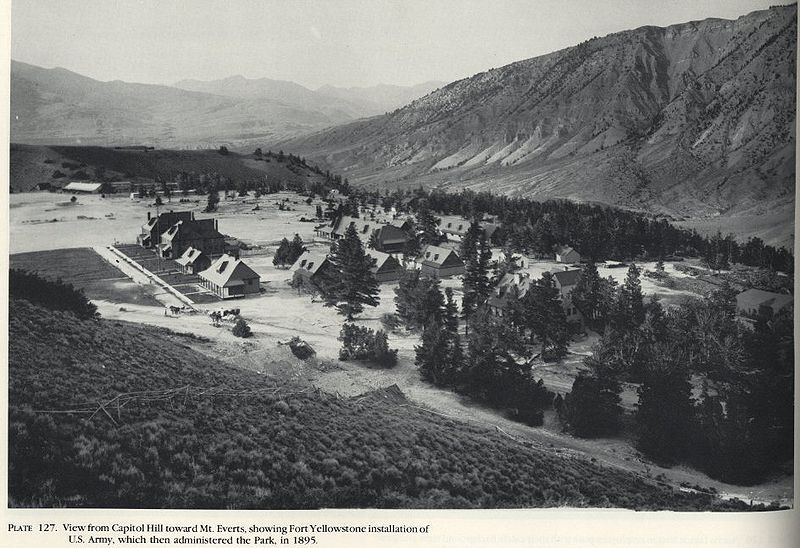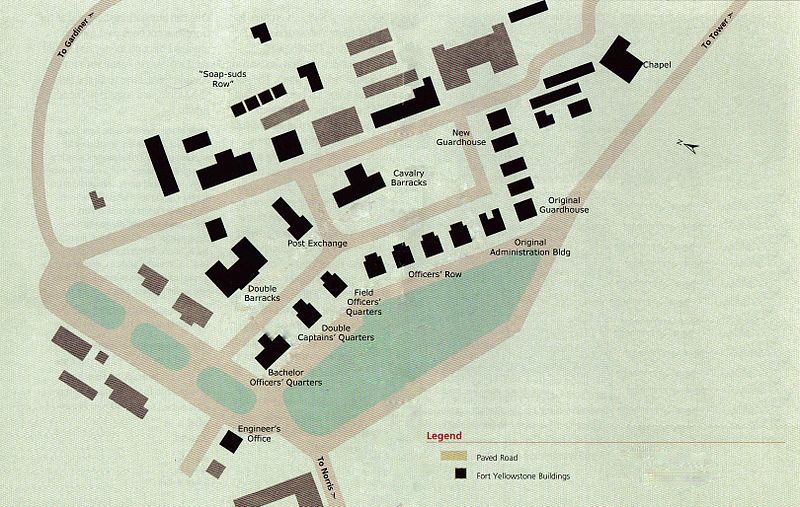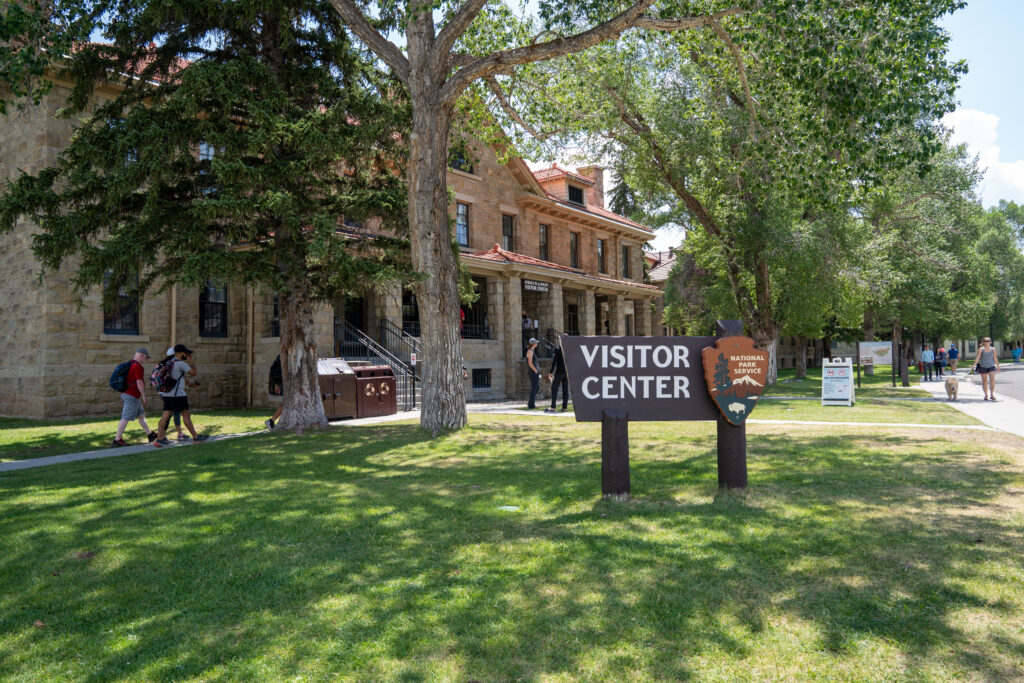If you’re visiting Yellowstone National Park, then Historic Fort Yellowstone is worth a visit. It’s located right in the heart of the park, and it offers a fascinating glimpse into the history of this iconic destination. This article will provide a brief overview of Historic Fort Yellowstone, including its origins, its evolution over time, and what it’s like today. So if you’re interested in learning more about this historic site, keep reading!
Historic Fort Yellowstone

Fort Yellowstone was established in 1891, about 19 years after the Yellowstone National Park was founded. The fort was originally called Camp Sheridan after General Phillip Sheridan who had originally had a calvary post built in Mammoth Springs in August of 1866. When the building of the fort started the name was changed to Fort Yellowstone.
It served as a military outpost from 1891 to 1918. Then the Army turned over ownership to the National Parks Service and it was also home to the park’s first headquarters. Today, Historic Fort Yellowstone is a museum and educational center. It’s run by the National Park Service, and its mission is to preserve and interpret the history of Yellowstone National Park.
How did the fort come to be in its current location at Yellowstone National Park?

The fort is located in what is now known as the Mammoth Hot Springs area of the park. This area is named for its famous hot springs, which are some of the largest and most impressive in Yellowstone. The fort itself is situated on a hillside overlooking these hot springs.
How has the fort evolved, and what changes have been made to it in recent years?
There were two phases of the original construction of Fort Yellowstone. The first phase of construction took place between 1891 and 1907. In 1891 a total of twelve buildings were constructed on the fort. The first building to be put up was a guardhouse in the southwest corner of the fort.
Other buildings constructed in 1891 were the administration building, officers quarters, 60-man barracks, storehouse, quartermaster storehouse, bakery, stable, granary, and non-commissioned officers’ quarters.
From 1893 to 1899 several more buildings were added which consisted of a shed to store hay, a 10-bed hospital, quarters for hospital workers, and the U.S. Commissioner’s office that included a jail and the residence for a U.S. Marshal. A few stone buildings were also built during this time which consisted of an office, living quarters, and a jail. In 1903 a second stone building was added that was known as “Pagoda”. This building housed the engineers that worked at the fort.
Second Phase of Construction

The second phase of major construction took place between 1908 to 1913. This is the period when the largest buildings were erected in Fort Yellowstone. During this time the calvary barracks were built that were three stories high.
Other buildings consist of field officers’ quarters, double captains’ quarters, a blacksmith shop, and a double stable guardhouse. The last building to be constructed during this period at the insistence of Wyoming Senator Francis E. Warren, the park superintendent, and the commissioner was a chapel that was completed in 1913.
In 2012 a new visitor center was constructed at Fort Yellowstone. Visitor Center houses exhibitions on the history of Yellowstone and its wildlife, as well as a bookstore and gift shop.
Who are some of the people who have worked or volunteered at Historic Fort Yellowstone over the years?
Many people have had the opportunity to work or volunteer at Historic Fort Yellowstone over the years. Some of them have even written about their experiences. One such person is Karen Duhring, who worked as a seasonal ranger at the fort in the early 1990s. In her book, “Yellowstone Memories: Reflections of a Seasonal Ranger,” Duhring writes about what it was like to live and work at this historic site.
If you’re interested in learning more about Yellowstone’s history, then a visit to Historic Fort Yellowstone is a must. It’s a fascinating place with a rich history, and there’s no better way to learn about it than to see it firsthand. So if you’re planning a trip to Yellowstone, be sure to add Historic Fort Yellowstone to your itinerary!
Historic Fort Yellowstone is located in Mammoth Hot Springs, Wyoming. Admission is free. For more information, visit their website at: nps.gov/yell/learn/historyculture/fort.htm.
Karen Duhring’s book “Yellowstone Memories: Reflections of a Seasonal Ranger” is available for purchase on Amazon.
Visiting Historic Fort Yellowstone

If you find yourself visiting Yellowstone National Park, set some time aside to explore Historic Fort Yellowstone. It’s located right in the heart of the park and it offers visitors a fascinating glimpse into the park’s past. You can learn about the fort’s history, see some of its original buildings, and even meet some of the people who work there. It’s a great way to spend an afternoon, and it’s sure to be a highlight of your trip!
For information on another fort located in Wyoming check out: Fort Washakie: A Historical Wyoming Fortress.

Cory is a website owner and content creator who enjoys fishing, history, coin collecting, and sports, among other hobbies. He is a husband and father of four.
Romans 15:4 For whatever was written in former days was written for our instruction, that through endurance and through the encouragement of the Scriptures we might have hope.


Yellowstone is an amazing place with great people watching over it. We loved our visit to the park. It was a dream that finlly came true. Keep up the great work.
Thank you Dr. Holley! I’m glad you had a good time there. So many great things to see and do. I appreciate the comment.